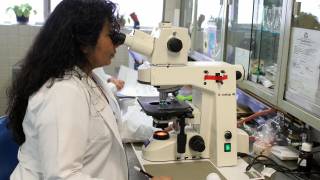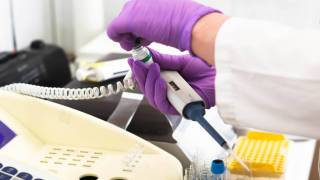Throat & Neck Cancers Exceed Cervical Cancer Cases

According to Centers for Disease Control and Prevention (CDC), there were more oropharyngeal cancer (12,600) cases than cervical cancer (9,700), confirmed during a 5-year Human Papillomavirus (HPV) study.
Oropharyngeal cancer was the most common cancer attributable to HPV in all states, except in Texas, where cervical cancer was most common, reported the CDC on August 22, 2019.
HPV related oropharyngeal cancers are found in both men and women in the back of the throat, including the base of the tongue and tonsils.
One of these studies found during 2012–2016, an average of 43,999 HPV-associated cancers were reported annually, and an estimated 79 percent (34,800) of these cancers were ‘attributable’ to HPV.
Among cancers estimated to be attributable to the types targeted by 9vHPV, 19,000 (59%) occurred among females, and 13,100 (41%) occurred among males.
Which means, these cancer cases could have been prevented by the Gardasil 9 vaccine.
The Gardasil 9 vaccine consists of HPV proteins, Types 6, 11, 16, 18, 31, 33, 45, 52, and 58, amorphous aluminum hydroxyphosphate sulfate, yeast protein, sodium chloride, L-histidine, Polysorbate 80, sodium borate, and water for injection.
However, the new CDC MMWR report indicates future bad news related to HPV cancers.
Over a previous 5-year period, there was less than a 1 percent increase in the vaccination rate among teenage girls.
Furthermore, just 51 percent of teenagers (females & males) had received all of the CDC recommended doses of the HPV preventive vaccine.
Moreover, the CDC says healthcare providers are the key players in eliminating future HPV cancers.
Consistently, data shows that physicians play a key role in educating parents and are the most trusted source of information for parents of pre-teens eligible for vaccination.
HPV vaccination rates were higher in teens whose parents reported receiving a recommendation from their child’s healthcare professional.
Both the CDC and state health departments continue to encourage health care professionals to talk to parents and provide them with information on the benefits of vaccination to prevent cancer and save lives.
CDC Director Robert R. Redfield, M.D., said in this press release, “This new data shows 1 in 4 parents who received a medical recommendation for the HPV vaccine chose not to have their child vaccinated.”
“The HPV vaccine is safe, and we encourage parents to get their pre-teens vaccinated and take the next step to prevent their children from developing HPV-related cancer later in life,” said Dr. Redfield.
The CDC recommends that all preteens get the HPV vaccine when they are 11 or 12 years old to protect them before they are ever exposed to the virus.
In addition to HPV vaccination, cervical cancer screening is recommended for women ages 21-65.
Lisa C. Richardson, M.D., MPH, director of CDC’s Division of Cancer Prevention and Control said, “Cervical cancer was once the leading cause of cancer deaths among women in the U.S. The HPV vaccine and cervical cancer screening have made it one of the most preventable cancers.”
“HPV vaccination is cancer prevention. We can protect our loved ones with the HPV vaccine.”
Cervical cancer screening
- Women ages 21-29 years can be screened with a Pap test every 3-years.
- In addition to the Pap test, a test called the HPV test looks for HPV infection.
- The HPV test can provide additional information when Pap test results are unclear for women ages 21 and older.
Oropharyngeal cancer diagnosis and treatments
- Oropharyngeal cancer is a disease in which malignant (cancer) cells form in the tissues of the oropharynx. The oropharynx is the middle part of the pharynx (throat), behind the mouth.
- Oropharyngeal cancer is a type of head and neck cancer. Sometimes more than one cancer can occur in the oropharynx and in other parts of the oral cavity, nose, pharynx, larynx, trachea, or esophagus at the same time.
- Most oropharyngeal cancers are squamous cell carcinomas. Squamous cells are the thin, flat cells lining the inside of the oropharynx.
Tests and procedures used to help detect and diagnose oropharyngeal cancer
- Physical exam and history: An exam of the body to check general signs of health, including checking for signs of disease, such as swollen lymph nodes in the neck or anything else that seems unusual. The medical doctor or dentist does a complete exam of the mouth and neck and looks under the tongue and down the throat with a small, long-handled mirror to check for abnormal areas. An exam of the eyes may be done to check for vision problems that are caused by nerves in the head and neck. A history of the patient’s health habits and past illnesses and treatments will also be taken.
- PET-CT scan: A procedure that combines the pictures from a positron emission tomography (PET) scan and a computed tomography (CT) scan. The PET and CT scans are done at the same time with the same machine. The combined scans give more detailed pictures of areas inside the body than either scan gives by itself. A PET-CT scan may be used to help diagnose disease, such as cancer, plan treatment, or find out how well treatment is working.
- CT scan (CAT scan): A procedure that makes a series of detailed pictures of areas inside the body, such as the head and neck, taken from different angles. The pictures are made by a computer linked to an x-ray machine. A dye is injected into a vein or swallowed to help the organs or tissues show up more clearly. This procedure is also called computed tomography, computerized tomography, or computerized axial tomography.
- PET scan (positron emission tomography scan): A procedure to find malignant tumor cells in the body. A small amount of radioactive glucose (sugar) is injected into a vein. The PET scanner rotates around the body and makes a picture of where glucose is being used in the body. Malignant tumor cells show up brighter in the picture because they are more active and take up more glucose than normal cells do.
- MRI (magnetic resonance imaging): A procedure that uses a magnet, radio waves, and a computer to make a series of detailed pictures of areas inside the body. This procedure is also called nuclear magnetic resonance imaging (NMRI).
- Biopsy: The removal of cells or tissues so they can be viewed under a microscope by a pathologist to check for signs of cancer. A fine-needle biopsy is usually done to remove a sample of tissue using a thin needle.
Procedures which may be used to remove samples of cells or tissue
- Endoscopy: A procedure to look at organs and tissues inside the body to check for abnormal areas. An endoscope is inserted through an incision (cut) in the skin or opening in the body, such as the mouth or nose. An endoscope is a thin, tube-like instrument with a light and a lens for viewing. It may also have a tool to remove abnormal tissue or lymph node samples, which are checked under a microscope for signs of disease. The nose, throat, back of the tongue, esophagus, stomach, larynx, windpipe, and large airways will be checked. The type of endoscopy is named for the part of the body that is being examined. For example, pharyngoscopy is an exam to check the pharynx.
- Laryngoscopy: A procedure in which the doctor checks the larynx (voice box) with a mirror or a laryngoscope to check for abnormal areas. A laryngoscope is a thin, tube-like instrument with a light and a lens for viewing the inside of the throat and voice box. It may also have a tool to remove tissue samples, which are checked under a microscope for signs of cancer.
If cancer is found, the following tests may be done to study the cancer cells
- HPV test (human papillomavirus test): A laboratory test used to check the sample of tissue for certain types of HPV infection. This test is done because oropharyngeal cancer can be caused by HPV.
There are different types of treatment for patients with oropharyngeal cancer.
Patients with oropharyngeal cancer should have their treatment planned by a team of doctors with expertise in treating head and neck cancer.
Four types of standard treatment
- Surgery
- Radiation therapy
- Chemotherapy
- Targeted therapy
- New types of immunotherapy treatments are being tested in clinical trials. These treatments for oropharyngeal cancer may cause side effects, says the CDC.
Vaccine protection
Gardasil 9 helps protect women ages 9 to 45 against oropharyngeal, cervical, vaginal, vulvar, and anal cancers and genital warts caused by 9 types of HPV.
It also is indicated to help protect men ages 9 to 45 against anal cancer and genital warts caused by those same HPV types.
>> Gardasil 9 vaccine discounts <<
“A future without HPV cancers is within reach, but urgent action is needed to improve vaccine coverage rates,” said ADM Brett P. Giroir, MD, HHS Assistant Secretary for Health.
Which means, healthcare providers need to increase their cancer-prevention conversations with patients!
Published by Vax Before Cancer
Our Trust Standards: Medical Advisory Committee

























